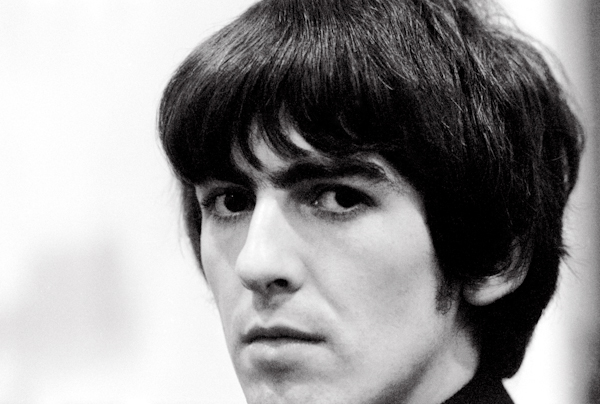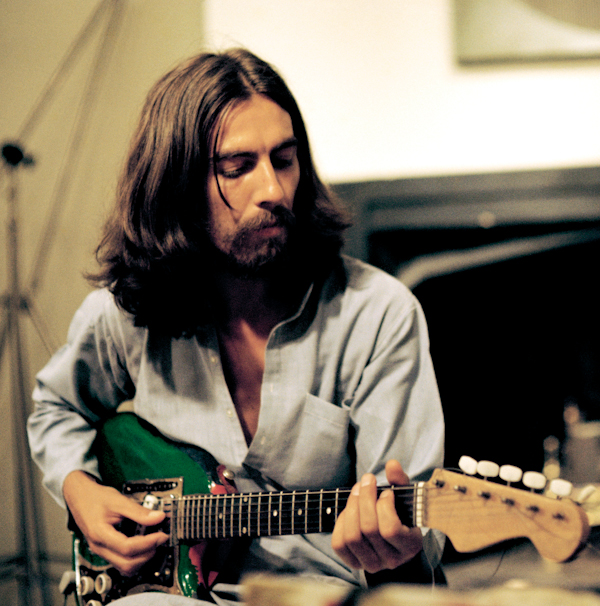George Harrison
Living in the Material World
PostED ON 22.09.2015 AT 2:59PM
DOCUMENTARY - In 2011, Martin Scorsese made an in-depth documentary on George Harrison, never released in French theaters. The feature film reveals the man behind the pop-rock idol of the phenomenal group that was the Beatles. Olivia Harrison, wife of the guitarist, will present a behind-the-scenes look at Living in the Material World, on the occasion of the Lumière festival screening event. George Harrison passed away in 2001 at the age of 58.

Harrison spent much of his career in the shadows of the prolific and media-frenzied Lennon/McCartney duo. He was, however, behind some of the most iconic melodies of the Beatles, including While My Guitar Gently Weeps or the jubilant Here Comes The Sun. Known for his shy and mysterious personality in the Fab Four, George Harrison was by no means the least talented of the group. Yet we had to wait until Let It Be (1970), the last album by the quartet from Liverpool, to hear a 45 record A-side of a Harrison composition.
The Quiet One, as he was called, a proletariat's son, made significant musical contributions to the amazing success of the Beatles (contrary to popular belief), thanks to his precise arrangements, riffs or melancholy chords. Like Ringo Starr, he was also brilliant at blending into the mechanics orchestrated by his two famous bandmates, John Lennon and Paul McCartney. Though he claimed to have always found his place in the wake of the two more popular figures of the Beatles, only after their separation did the guitarist, raised a Catholic, find his artistic and personal salvation.

Martin Scorsese was interested in showing the hidden side of the complex personality of Harrison, the youngest member of the Beatles. The musician reveals himself in front of the camera in interviews in the years before his death, discussing the rise and separation of the Beatles, but also addressing his most intimate questions, his obsessions and his struggles… He did not hesitate, for example, to tackle the political class in Taxman, one of his most famous compositions of the Fab Four era.
Convinced by Olivia Harrison, the musician's wife since 1974 and by a letter Harrison wrote to his parents in full Beatlemania, Martin Scorsese traced Harrison's path over a period of five years, immersing himself in the psyche of the mysterious George through candid interviews with relatives and former colleagues. Scorsese received particularly valuable help from Olivia and from son Dhani, who were at the artist's side until his death in Los Angeles. They shared stories about him and provided materials (photographs, archives, letters, drafts, drawings...) that were highly personal but necessary to the director of Taxi Driver, in order to bring the project to completion.

In this three and a half-hour documentary, filled with countless unpublished archives and photographs, Scorsese relates Harrison's relationship to money or to drugs, his years of chilly relations with former Beatles, his friendship with Eric Clapton - who speaks at length, as do Paul McCartney and Ringo Starr - and his passionate quest for another form of spirituality, nearly mystical, toward an "intangible world."
A section of the film also tells how Harrison had a brush with death after a man who broke into his home stabbed him several times. Co-produced by Olivia Harrison, the film was released in the United States on HB0, but a theatrical release was never proposed in France. An accomplished musician with a very personal universe, George Harrison did not maintain a particularly close relationship with the cinema. "He loved old movies. His favorite movie was Dr. Jekyll and Mr. Hyde, with Spencer Tracy," Olivia Harrison commented in an interview with Le Monde. Of Martin Scorsese's films, he loved The Last Waltz.
B.P.
---

